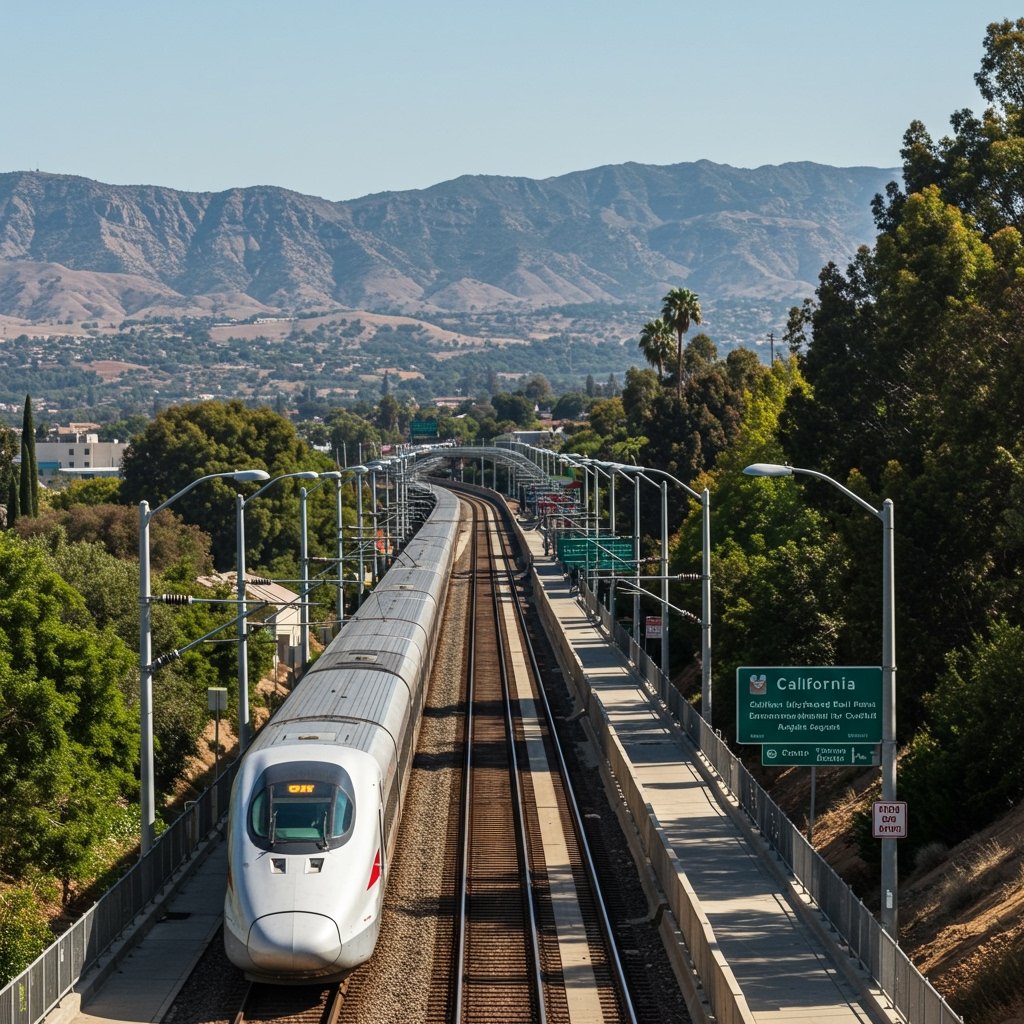Pivotal Milestone Achieved: Burbank-Los Angeles High-Speed Rail Segment Receives Final Environmental Clearance
SACRAMENTO, Calif. – In a significant step forward for the ambitious infrastructure project, the California High-Speed Rail Authority (CHSRA) announced on February 15, 2025, that it has secured final environmental clearance for a critical 14-mile segment of the planned high-speed rail line. This vital approval, granted under the rigorous California Environmental Quality Act (CEQA), covers the section linking Burbank to Los Angeles Union Station.
This clearance represents a major achievement, resolving complex environmental challenges inherent to developing infrastructure within a densely populated urban corridor. It effectively secures a vital link into downtown Los Angeles, setting the stage for substantial progress on connecting the state’s future high-speed rail network to its largest metropolitan area.
Navigating the Urban Landscape: The Burbank-Los Angeles Segment
The segment receiving clearance spans approximately 14 miles, traversing a complex landscape between the City of Burbank and the historic Los Angeles Union Station. This route is essential not only for bringing high-speed rail service directly into the heart of Los Angeles but also for integrating with the existing major transit network centered at Union Station.
Developing a high-speed rail line through such an established urban environment presented unique challenges. These included potential impacts related to noise, vibration, air quality, utility relocation, and interactions with existing transportation infrastructure like Metrolink, Amtrak, and local transit systems. The CEQA review process required thorough analysis and mitigation strategies to address these concerns, ensuring that the project meets stringent environmental standards.
Environmental Clearance: A Gateway to Progress
Receiving final CEQA clearance is more than just a regulatory checkbox; it is a necessary prerequisite that unlocks subsequent project development phases. It signifies that the environmental impacts of the proposed design within this specific corridor have been fully studied, publicly reviewed, and approved, with necessary mitigation measures identified and adopted. This provides certainty and a clear path forward for the project.
The California Environmental Quality Act requires state and local agencies to identify the significant environmental impacts of their actions and to avoid or mitigate those impacts, if feasible. Navigating this process for a project of this scale and complexity in an urban setting is a lengthy and demanding endeavor, underscoring the significance of this February 15, 2025, announcement.
Advancing Design and Procurement
According to CHSRA CEO Brian Kelly, this critical environmental approval empowers the Authority to move forward with crucial next steps. “Receiving CEQA clearance for the Burbank-Los Angeles segment is a transformative milestone for the California High-Speed Rail project,” stated Kelly. “This clearance enables us to advance final design work and initiate the procurement process for construction bids on this section later in 2025. This is a vital step in bringing high-speed rail to Southern California and connecting our citizens.”
Advancing final design means developing detailed engineering plans required for construction. Initiating the procurement process involves preparing bid documents and soliciting proposals from qualified construction firms interested in undertaking the work on this specific segment. The timeline provided by CEO Kelly – initiating procurement and seeking construction bids later in 2025 – indicates a determined push to translate environmental clearance into tangible construction activity within the year.
Connecting the Network: Linking Central Valley to Southern California
The Burbank-Los Angeles Union Station segment is geographically distant from the sections of the high-speed rail line currently under construction in the Central Valley. However, its environmental clearance is crucial for the overall project’s integrity and functionality. The Central Valley sections are foundational, building the initial track infrastructure. Yet, without the complex urban segments, such as the one connecting Burbank to Los Angeles, the Central Valley line cannot effectively serve the state’s major population centers.
This milestone significantly accelerates progress on connecting the completed and future Central Valley infrastructure to Southern California’s major transit network at Los Angeles Union Station. It represents a crucial step towards the operational Phase 1 system, which aims to connect San Francisco in Northern California to Los Angeles/Anaheim in Southern California with high-speed rail service.
The Los Angeles Union Station connection is particularly important due to its status as a major transportation hub, offering transfers to Metrolink commuter rail, Amtrak intercity rail, and various local bus and subway lines. Integrating high-speed rail here will provide seamless connectivity for passengers arriving from or departing to destinations along the future network.
Looking Ahead
With environmental hurdles cleared, the focus now shifts to the detailed engineering, land acquisition (where necessary), and the competitive bidding process for construction contracts. While significant work remains, including securing necessary funding and completing environmental reviews on other parts of the Phase 1 alignment, the approval for the Burbank-Los Angeles segment removes a major regulatory barrier and injects renewed momentum into the project.
The ability to begin procurement for construction bids later in 2025, as outlined by CEO Brian Kelly, signals a tangible timeline for bringing construction activity to this vital part of the alignment. As design is finalized and bids are received, the project will move closer to breaking ground on this essential link, further solidifying the path towards connecting Northern and Southern California via high-speed rail.
This February 15, 2025, environmental clearance marks a definitive step forward, demonstrating the California High-Speed Rail Authority’s commitment to completing the necessary planning and environmental work required to build a modern, efficient high-speed rail system for the state.


















